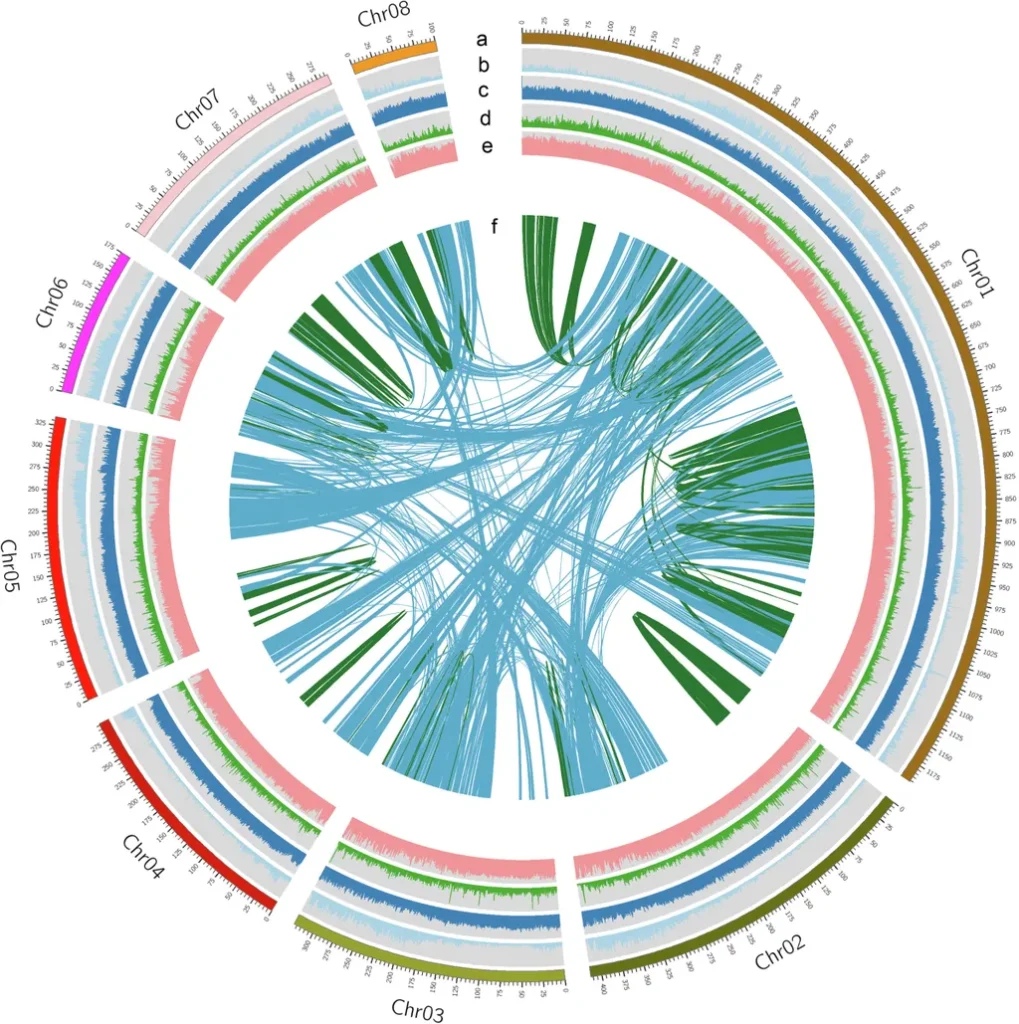In a significant stride for both conservation and agriculture, researchers have unveiled the first high-quality, chromosome-level genome assembly of Ormosia henryi, an endangered species renowned for its ornamental and timber value. This breakthrough, published in *Scientific Data*, opens new avenues for molecular breeding, disease resistance, and the sustainable utilization of this valuable plant.
Ormosia henryi, a member of the legume family, is native to southern China, Vietnam, and Thailand. Its timber is highly prized, and its aesthetic appeal makes it a sought-after ornamental tree. However, its endangered status has necessitated urgent conservation efforts. The genome assembly, achieved using HiFi and Hi-C sequencing technologies, spans eight pseudo-chromosomes and totals 3.065 gigabases, with a contig N50 of 110.65 megabases. The researchers annotated 90,019 protein-coding genes, achieving a BUSCO evaluation score of 95.5%, indicating a highly complete and accurate assembly.
“This genome assembly is a critical step forward,” said Lei Duan, the lead author of the study from the Key Laboratory of National Forestry and Grassland Administration on Plant Conservation and Utilization in Southern China. “It provides a comprehensive genetic blueprint that will facilitate both conservation efforts and the exploration of O. henryi’s economic potential.”
The phylogenetic analysis conducted as part of the study revealed that O. henryi falls within the infrageneric clade of the Old World I, shedding light on its evolutionary relationships within the Leguminosae family. This information is invaluable for understanding the species’ genetic diversity and adaptive traits, which can be harnessed for breeding programs aimed at improving disease resistance and other desirable traits.
For the agriculture sector, the implications are substantial. The high-quality genome sequence enables precise genetic manipulation, paving the way for the development of disease-resistant varieties and the enhancement of timber quality. “By understanding the genetic underpinnings of O. henryi, we can develop strategies to conserve its wild resources while also tapping into its economic value,” Duan explained. “This research will promote future genomic comparative studies across more species within the amphi-Pacific distributed genus Ormosia.”
The study’s findings not only bolster conservation efforts but also offer a roadmap for sustainable agricultural practices. As the global demand for high-quality timber and ornamental plants continues to grow, the insights gained from this genome assembly will be instrumental in meeting these needs while ensuring the long-term survival of O. henryi.
In summary, this research represents a pivotal advancement in the field of plant genomics, with far-reaching implications for both conservation and agriculture. The high-quality genome sequences of O. henryi will undoubtedly facilitate the exploration of its economic value and contribute to the preservation of this endangered species.

